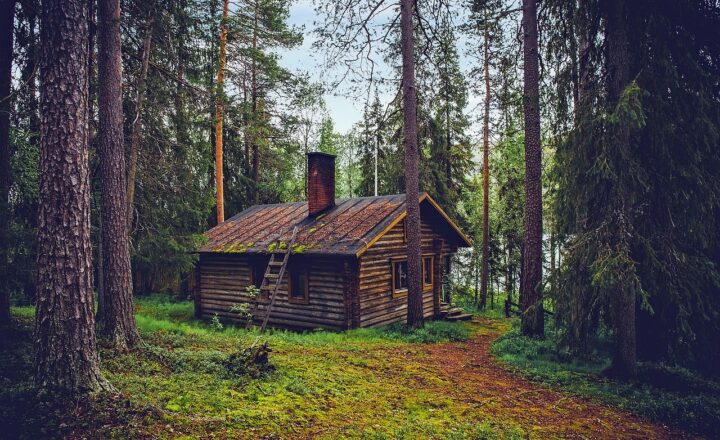How DIY Projects Are Helping People Create Energy-Efficient and Eco-Friendly Homes
November 17, 2024

DIY projects have made a remarkable impact in today’s world—especially in the home improvement sector. As environmental consciousness grows, so does the popularity of DIY projects that promote energy efficiency and eco-friendliness. Homeowners are increasingly turning to these projects not only to enhance their living spaces but also to reduce their carbon footprint and save on energy costs. In this comprehensive article, we will explore how DIY projects are leading the way in creating energy-efficient and eco-friendly homes.
1. Understanding Energy Efficiency and Eco-Friendliness
Before diving into specific DIY projects, it’s essential to understand the concepts of energy efficiency and eco-friendliness. Energy efficiency refers to using less energy to provide the same service. This can be accomplished through various means, such as upgrading insulation, using energy-efficient appliances, and implementing smart home technologies. Eco-friendliness, on the other hand, focuses on minimizing the impact on the environment. This encompasses using sustainable materials, reducing waste, and conserving resources.
Focusing on these principles in our homes not only benefits the planet but also translates to financial savings in the long run. Let’s look at how DIY projects can contribute to this shift.
2. Popular DIY Projects for Energy Efficiency
When it comes to DIY projects aimed at energy efficiency, there are numerous options that homeowners can explore. Here are some popular choices:
2.1 Insulation Upgrades
Improper insulation can lead to significant energy loss. DIYers can enhance home insulation with products like foam board, cellulose, or spray foam. Adding insulation to attics, crawl spaces, and walls can dramatically decrease heating and cooling costs.
2.2 Weather Stripping and Caulking
Air leaks can create drafts, forcing HVAC systems to work harder. Applying weather stripping and caulking around windows and doors can serve as a simple yet effective DIY project that keeps conditioned air in and outdoor air out. This translates to increased comfort and lower utility bills.
2.3 Energy-Efficient Lighting
Switching from incandescent bulbs to LED lighting is another straightforward DIY upgrade. LED bulbs use significantly less energy and have a much longer lifespan. Homeowners can replace light fixtures to accommodate more energy-efficient options, making for a brighter and more cost-effective home.
2.4 Installing Smart Thermostats
Smart thermostats are game-changers for energy efficiency. They learn your schedule, preferences, and patterns to optimize heating and cooling. Homeowners can install smart thermostats themselves, offering maximum control over energy usage, which leads to significant savings.
3. Creating Eco-Friendly Spaces
In addition to energy efficiency, eco-friendliness is integral to modern DIY home projects. Here are some eco-friendly projects that you can undertake:
3.1 Utilizing Recycled Materials
Using recycled materials in DIY projects can significantly reduce waste. From reclaimed wood for furniture to repurposed glass jars for storage, creativity takes the lead in eco-friendliness. Not only does this reduce landfill waste, but it also adds a unique charm to homes.
3.2 Indoor Plants and Green Spaces
Incorporating indoor plants and creating green spaces can enhance air quality and promote well-being. DIY vertical gardens, plant shelves, or herb planters not only look great but can also produce food and contribute to a healthier living environment.
3.3 Using Eco-Friendly Paints and Finishes
Traditional paints often release harmful volatile organic compounds (VOCs). By choosing eco-friendly paints and finishes, DIYers can improve indoor air quality and reduce their environmental impact. Many brands now produce paints with a lower environmental footprint, contributing to healthier home environments.
3.4 Rainwater Harvesting Systems
Constructing a rainwater harvesting system is an excellent DIY project with environmental benefits. Capturing rainwater for landscaping or even household use reduces dependency on municipal water systems. Such systems contribute profoundly to water conservation efforts.
4. Cost Benefits of DIY Energy-Efficient Projects
Many homeowners are hesitant to undertake DIY projects due to perceived costs. However, it’s essential to consider the long-term savings that can be achieved with these energy-efficient upgrades. Here’s how:
- Reduced Utility Bills: Implementing energy-efficient solutions can lead to substantial monthly savings on utility bills, significantly offsetting the initial investment costs of the projects.
- Increased Home Value: Energy-efficient homes often appraise higher than less efficient counterparts. Prospective buyers consider energy efficiency as a highly desirable feature, influencing their purchasing decisions.
- Incentives and Rebates: Local and national programs often incentivize energy-efficient upgrades, providing financial rebates for homeowners who undertake DIY projects. Researching available incentives can lower conversion costs significantly.
5. Community and Social Impact of DIY Eco-Friendly Projects
The rise of DIY projects that focus on energy efficiency and sustainability does not only impact individual homeowners. There is a ripple effect within communities:
- Promoting Green Awareness: As more individuals undertake energy-efficient and eco-friendly projects, communities become more aware of environmental issues, leading to a collective push toward sustainability.
- Workshops and Skill Sharing: Many communities now offer workshops that share skills related to DIY eco-friendly projects, promoting collaboration and education on sustainable living practices.
- Community Gardens and Shared Spaces: DIY projects that involve community gardens or shared green spaces foster a sense of community and responsibility toward local environments, encouraging diverse participation in sustainability efforts.
Conclusion
In conclusion, DIY projects play a vital role in transforming homes into energy-efficient and eco-friendly spaces. By leveraging creativity and resourcefulness, homeowners can make impactful changes that benefit the environment and their lifestyle. Whether through insulation upgrades, recycling materials, or developing green spaces, every small project contributes to a larger movement toward sustainable living. As you contemplate your next home improvement endeavor, consider how going DIY can result in not just a healthier home but a healthier planet as well. Taking action today can lead to significant changes for tomorrow.
Embracing these projects empowers individuals to not only improve their homes but also contribute positively to the world around them. So get your tools ready and start making a difference, one DIY project at a time!







